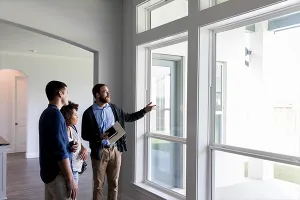In August, the economy showed mixed signals as markets looked ahead to the Federal Reserve’s widely expected rate cut in September. Job creation slowed, reinforcing the case for policy easing, while inflation ticked up to 2.9%, remaining above the Fed’s target. At the same time, overall economic growth remained solid. Despite this resilience, rising concerns about labor market softness have given the Fed additional room to cut rates in September and potentially twice more before year-end.
Interest rates remained elevated, and the commercial real estate market remained soft in August, though conditions varied by sector. The office market continued to post negative demand, but losses have eased compared to past years, keeping vacancy rates steady. The multifamily sector showed steady absorption and gradual stabilization, though oversupply kept vacancy elevated and rent growth subdued. Retail softened as new supply added pressure, yet it still posted the fastest rent gains, driven by general retail. Industrial cooled further as completions far outpaced demand, pushing vacancy higher and slowing rents across property types.
Below is a summary of the performance of each major commercial real estate sector in August of 2025.
Office Properties
The office market continues to record negative absorption, but recent losses are relatively modest compared to the steep declines of prior years. Vacancy is holding at 14.1%, and rent growth remains subdued at 0.9% year-over-year as landlords rely on concessions to secure tenants. Class A space remains the main source of demand, while Class B is under more pressure despite slightly stronger rent growth. Class C properties continue to struggle with tenant losses and rising vacancy.

Multifamily Properties
As of August 2025, the multifamily market continues to stabilize, with absorption steady at about 506,000 units and new completions down 18%. The sector is still working through past oversupply, with new supply still outpacing demand. As a result, vacancy edged up to 8.2% and rent growth eased to 0.9% year-over-year. By class, Class A properties continue to carry the highest vacancies but have posted modest rent gains, while Class B properties have seen stronger leasing activity but weaker pricing power. Class C remains under strain with ongoing tenant losses, though it continues to deliver the strongest rent gains.

Retail Properties
The retail sector remains under pressure as e-commerce and the pandemic’s lasting effects continue to weigh on demand. Over the past year, absorption turned negative, and vacancy edged up to 4.3%. However, rent growth in retail spaces remains the highest among CRE sectors. General retail was the only category to post positive absorption and continues to hold the lowest vacancy, while neighborhood centers saw a sharp reversal, and malls recorded further losses despite trimming inventory.

Industrial Properties
The industrial sector has slowed significantly, with absorption dropping to a decade low as demand softened and new completions far outpaced leasing. Vacancy rose to 7.5%, while rent growth eased to 1.6%, extending the sector's cooling trend. Logistics remained the main driver of demand, supported by specialized facilities, while flex space continued to lose tenants. Rents declined across all property types, with logistics and specialized facilities seeing the steepest drops.

Hotel/Motel Properties
Hospitality performance held steady in August 2025, with occupancy at 62.8%, still 3.2% below pre-pandemic levels due to remote work and softer corporate travel in urban markets. ADR and RevPAR have both surpassed 2019 benchmarks, rising 22% and 16% and supporting profitability. Investment activity has slowed as higher financing costs and economic uncertainty weigh on transactions despite solid fundamentals. Leisure destinations such as Hawaii continue to post record highs, while urban areas, including San Francisco and parts of Texas, remain well below pre-pandemic norms.










